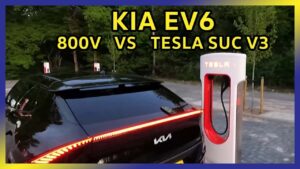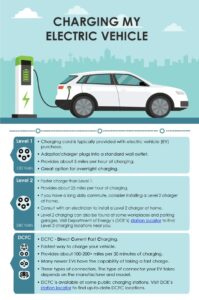Looking to join the growing number of Tesla owners and wondering how to install a Tesla charger? Well, we’ve got you covered! Installing a Tesla charger may seem like a daunting task, but with the right guidance, it can be a smooth and hassle-free process. In this article, we’ll walk you through the steps to install your Tesla charger, ensuring you can enjoy the convenience of charging your electric vehicle at home. So, let’s dive right in and discover how to install a Tesla charger without any unnecessary complications.
How to Install a Tesla Charger
Installing a Tesla charger at your home can be an exciting and convenient way to ensure that your electric vehicle (EV) is always ready for the road. With a dedicated charger, you can say goodbye to frequent visits to public charging stations and enjoy the convenience of charging your Tesla overnight or whenever it’s most convenient for you. In this comprehensive guide, we’ll walk you through the step-by-step process of installing a Tesla charger at your home.
1. Determine Your Charging Needs
Before diving into the installation process, it’s crucial to assess your charging needs. Consider the following factors:
- The charging speed you require: Tesla offers various chargers with different power outputs. Determine your optimal charging speed based on your daily driving habits and typical charging duration.
- Available electrical capacity: Check your home’s electrical panel to ensure it has sufficient capacity to support the charger. If necessary, consult with a licensed electrician to determine if any electrical upgrades are needed.
- Charging location: Decide on the best location for your charger. It should be easily accessible and close to your vehicle’s parking spot, ideally within reach of your home’s Wi-Fi network.
2. Choose the Right Tesla Charger
Tesla offers a range of charging options, each designed to fit different charging needs. The two main types of Tesla chargers are:
- Tesla Wall Connector: This is a high-power charger capable of delivering up to 48 amps. It can be permanently mounted on the wall and offers the fastest charging speeds for Tesla vehicles.
- Tesla Mobile Connector: This portable charger comes with your Tesla and can be plugged into a variety of outlets. While it’s convenient for traveling, it typically offers slower charging speeds compared to the Wall Connector.
Consider your charging needs, budget, and installation requirements when choosing the right Tesla charger for your home.
3. Gather the Necessary Tools and Equipment
Before starting the installation process, make sure you have the following tools and equipment on hand:
- Tesla charger of your choice
- Circuit breaker
- Electrical wires
- Wire connectors
- Wire strippers
- Pliers
- Screwdriver
- Level
- Measuring tape
4. Prepare Your Electrical System
Properly preparing your electrical system ensures a safe and efficient installation process. Follow these steps:
- Turn off the main power supply: Locate your home’s main electrical panel and switch off the main circuit breaker. This step is essential to prevent any electrical accidents during the installation.
- Identify a suitable location for the circuit breaker: Choose a location near your electrical panel to install the circuit breaker for your Tesla charger. Ensure there is enough space and the wiring can reach the charger location.
- Install the circuit breaker: Connect the circuit breaker to the electrical panel according to the manufacturer’s instructions. It’s crucial to follow local electrical codes and guidelines to ensure a safe and compliant installation.
- Route the electrical wiring: Carefully route the electrical wiring from the circuit breaker location to the installation site of the Tesla charger. Keep the wiring well-protected and away from any potential hazards.
5. Install the Tesla Charger
Now it’s time to install the Tesla charger itself. Follow these steps:
- Determine the charger location: Choose a suitable location on the wall for the Tesla charger. Ensure it’s within reach of the electrical wiring, ideally near your vehicle’s parking spot.
- Mount the charger: Use a level and measuring tape to ensure the charger is mounted securely and level on the wall. Follow the manufacturer’s instructions for proper installation.
- Connect the electrical wiring: Carefully connect the electrical wiring to the back of the Tesla charger. Follow the manufacturer’s guidelines and use wire connectors to ensure secure connections.
- Test the charger: Before fully securing the charger to the wall, turn on the main power supply and test the charger to ensure it’s functioning properly. Follow the manufacturer’s instructions for testing procedures.
- Secure the charger: Once you’ve confirmed that the charger is working correctly, secure it firmly to the wall using appropriate screws or brackets as recommended by the manufacturer.
6. Configure and Connect the Charger
To ensure seamless charging and connectivity, follow these steps:
- Configure the charger settings: Use the Tesla mobile app or the charger’s built-in settings to configure preferred charging settings, such as charging speed, scheduled charging, and notifications.
- Connect to Wi-Fi: If applicable, connect the Tesla charger to your home’s Wi-Fi network. This enables over-the-air software updates and connectivity features.
7. Schedule a Final Inspection
To ensure your Tesla charger installation meets local electrical codes and regulations, it’s essential to schedule a final inspection with a licensed electrician or your local building authority. They will verify the installation and provide any necessary approvals or recommendations for compliance.
Installing a Tesla charger at home not only enhances the convenience of owning an electric vehicle but also ensures you have a reliable and efficient charging solution. By following the steps outlined in this guide and consulting with professionals when needed, you can confidently install a Tesla charger and enjoy seamless charging for years to come.
Step by Step Guide to Install Tesla Wall Connector (Gen 3) – TESBROS
Frequently Asked Questions
How do I install a Tesla charger?
To install a Tesla charger, you need to follow these steps:
- Choose the charger model: Select the appropriate Tesla charger model for your needs and ensure it is compatible with your Tesla vehicle.
- Find a suitable location: Identify a location near your electrical panel where you want to install the charger. It should have sufficient space, ventilation, and meet any local codes or regulations.
- Hire a certified electrician: It is recommended to hire a licensed electrician with experience in EV charger installations. They will ensure the correct wiring, grounding, and safety measures are implemented.
- Upgrade electrical panel (if necessary): If your current electrical panel does not have enough capacity to handle the charger, the electrician may need to upgrade it.
- Install the charger: The electrician will install the charger, connect it to the electrical panel, and properly ground the system. They will also mount the charger on a wall or other suitable structure.
- Get necessary permits and inspections: In some areas, permits and inspections may be required for EV charger installations. Check with your local authorities and ensure compliance with any regulations.
Can I install a Tesla charger myself?
While it is possible for some individuals with electrical knowledge and experience to install a Tesla charger themselves, it is highly recommended to hire a certified electrician. They have the expertise to ensure a safe and proper installation, comply with local codes, and handle any necessary electrical upgrades.
What electrical requirements do I need for a Tesla charger installation?
The electrical requirements for a Tesla charger installation may vary depending on the charger model and your home’s electrical system. Generally, you will need a dedicated circuit with sufficient amperage capacity, such as 60-100 amps, and a 240-volt outlet. It is essential to consult a certified electrician to assess your specific electrical setup and determine the exact requirements.
Do I need to have an electric vehicle (EV) to install a Tesla charger?
Yes, a Tesla charger is specifically designed to charge Tesla electric vehicles. Therefore, you need to own a Tesla vehicle to utilize the charger effectively.
Can I use a Tesla charger with other electric vehicles?
Tesla chargers are primarily built for Tesla electric vehicles and may not be compatible with other electric vehicle brands. However, certain Tesla chargers, like the Tesla Wall Connector, can be adapted to work with other electric vehicles using additional hardware or adapters. It is advisable to consult Tesla or a certified electrician to explore compatibility options for your specific needs.
Final Thoughts
Installing a Tesla charger is a straightforward process that can be easily accomplished at home. Start by assessing your electrical capacity and contacting a professional electrician to ensure it meets the necessary requirements. Next, choose the appropriate charger model for your needs and gather the necessary tools and equipment. Follow the manufacturer’s instructions carefully to safely connect the charger to your home’s electrical system. Lastly, perform a test run to verify proper functionality. By following these simple steps, you can confidently install a Tesla charger and enjoy the convenience of charging your electric vehicle at home. So, if you’re wondering how to install a Tesla charger, follow these steps and get started today!



